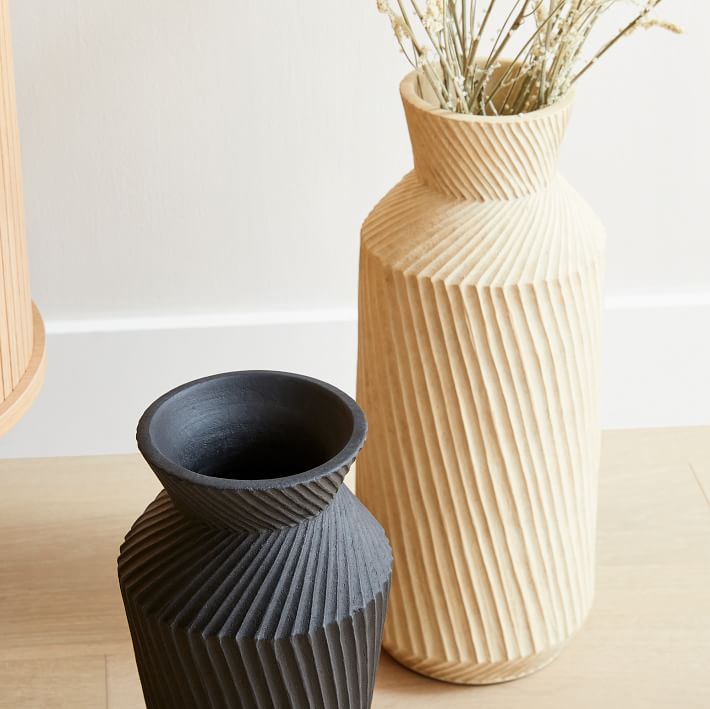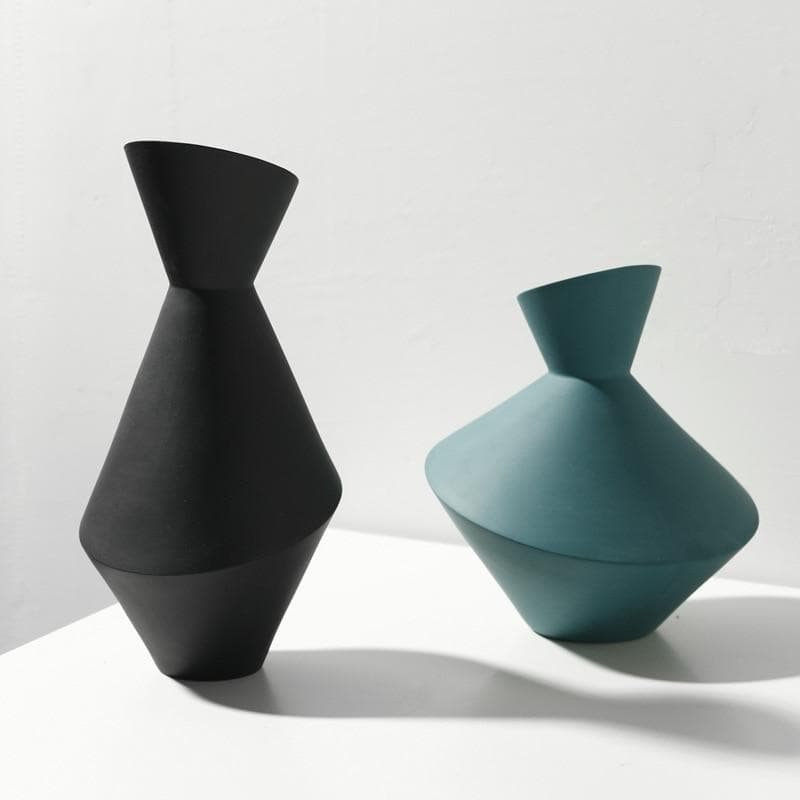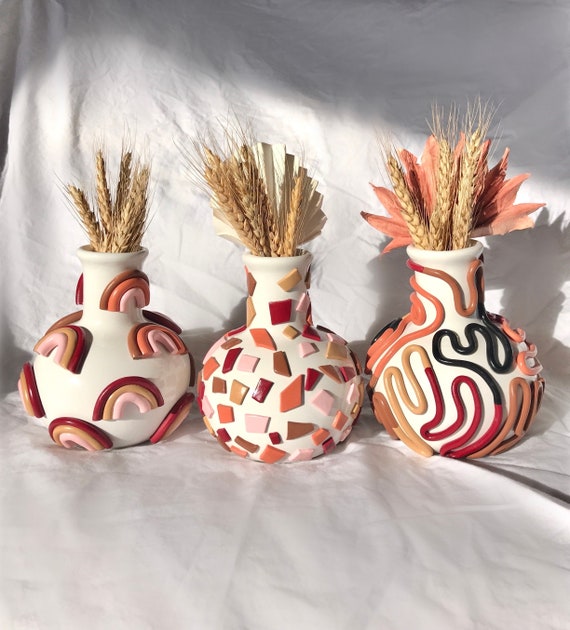From Clay to Art: Handcrafted Vases That Display the Elegance of Creation
This post examines the artistry and charm of handcrafted vases, concentrating on the process of transforming clay into art.
It explores the techniques employed in creating these vases and emphasizes the celebration of virtuosity that handmade flower holders stand for.
With a goal as well as impersonal lens, this short article aims to shed light on the craftsmanship and ability entailed in the development of handcrafted vases, highlighting their ability to display the elegance of workmanship.
The Creativity of Handcrafted Vases
The artistry of handmade flower holders appears in their elaborate designs and also careful craftsmanship (Vase). These vases are not just practical objects but are artworks that show the skill and also imagination of the artisans that produce them
The intricate layouts discovered on handcrafted flower holders showcase the degree of detail and also accuracy that enters into their production. Each vase is carefully crafted, with every line, pattern, as well as curve attentively considered to boost its aesthetic charm. The artisans utilize numerous methods such as sculpting, molding, as well as painting to bring their creative vision to life.
Furthermore, the careful craftsmanship associated with making handmade vases is exceptional. These vases are usually made from clay, which requires a fragile touch and also precise shaping. The artisans masterfully adjust the clay, applying just the correct amount of stress to create the preferred type and also size. They focus on every minute information, making certain that the surface is smooth as well as perfect. Additionally, the firing and glazing processes need expertise to achieve the preferred appearance, coating, and also shade.
Discovering the Clay-to-Art Refine

When it comes to handmade vases, the journey from clay to art starts with the option of the raw product. Clay, recognized for its pliability as well as ability to retain form when discharged, is the key material used.
The clay is then prepared by getting rid of contaminations as well as excess wetness, guaranteeing a smooth and practical consistency. As soon as the clay prepares, it is shaped into the wanted type using numerous methods such as throwing, curling, or slab building - Vase. The craftsmen thoroughly sculpts the clay, focusing on details such as symmetry, percentage, as well as surface area appearance
After shaping, the flower holder is entrusted to completely dry slowly, permitting it to harden and also stabilize. As soon as dry, it goes through the shooting process, where it undergoes heats in a kiln. This shooting procedure not only enhances the flower holder but also changes the clay into a sturdy and also long-term material.
Introducing the Appeal of Handiwork
Revealing the elegance of the artisan's craftsmanship entails a thorough and also careful process that highlights the precision, skill, as well as persistence called for to develop a handmade work of art.
The art of creation is a classic practice that has actually been given via generations, maintaining the significance of social heritage.
The artisan begins by thoroughly choosing the raw materials, guaranteeing that they are of the best quality and also appropriate for the designated style. The clay is then prepared, undergoing a collection of steps such as rub, wedging, as well as shaping to achieve the wanted uniformity as well as eliminate any air bubbles or contaminations.

After the shaping is complete, the flower holder is meticulously dried out to eliminate any continuing to be dampness, ensuring its resilience and security. The final step entails firing the vase in a kiln, which not just enhances the clay but additionally imparts an unique personality to the finished item.
The result is a handmade flower holder that embodies the skill, commitment, and creative vision of the artisan, showcasing the elegance of their craftsmanship.
Strategies Behind Handmade Vases
One vital element of developing handcrafted flower holders includes the careful option and prep work of raw materials. The selection of resources is crucial as it figures out the final result and also high quality of the flower holder. Artisans normally select clay that possesses the wanted residential properties, such as shade, plasticity, and also strength. The clay is then processed to eliminate contaminations and improve its workability. This process includes actions like wedging, which aids to remove air bubbles and produce an identical appearance.
When the clay is prepared, it can be formed utilizing different methods such as wheel throwing or hand structure. Wheel throwing includes spinning the clay on a pottery wheel while shaping it with hands and tools. Hand structure strategies, on the various other hand, include manually shaping the clay using coils, slabs, or pinching.
After the flower holder is formed, it is delegated dry slowly to avoid breaking. Once dried out, the flower holder goes through the firing process in a kiln, where it is revealed to heats to set as well as transform the clay into a ceramic material. The shooting procedure also enables the application of lusters, which add color and also supply an ornamental finish to the flower holder.
Generally, the careful option and also prep work of basic materials are vital action in the production of handcrafted flower holders, ensuring their quality and also aesthetic allure.
Handmade Vases: An Event of Artistry
The workmanship behind hand-made vases reflects the skill as well as creative thinking of the artisans involved in their development. The procedure of developing a handmade vase includes different phases, each calling for thorough focus to detail and a deep understanding of the material being used.
The initial step in crafting a hand-crafted flower holder is the option of the clay. Craftsmens pick clay that is of premium quality and also ideal for the desired form and also layout. As soon as the clay is picked, it is carefully prepared by removing contaminations and also massaging it to attain the wanted uniformity.
The shaping of the flower holder is done by hand, making use of traditional techniques such as coiling, pinching, or tossing on a potter's wheel. This calls for a steady hand and an eager eye for percentage as well as balance. The craftsmens use their fingers, tools, and even their breath to shape the clay right into the wanted kind.
After the flower holder is shaped, it undergoes a process of drying as well as firing in a kiln. This firing process changes the clay right into a resilient ceramic product. The artisans thoroughly check the temperature and also period of the shooting to make certain that the vase attains the wanted stamina as well as look.
As soon as the flower holder is fired, it can be enhanced using various techniques such as painting, carving, or glazing. These decorative components add beauty and also uniqueness to the flower holder, improving its creative worth.
